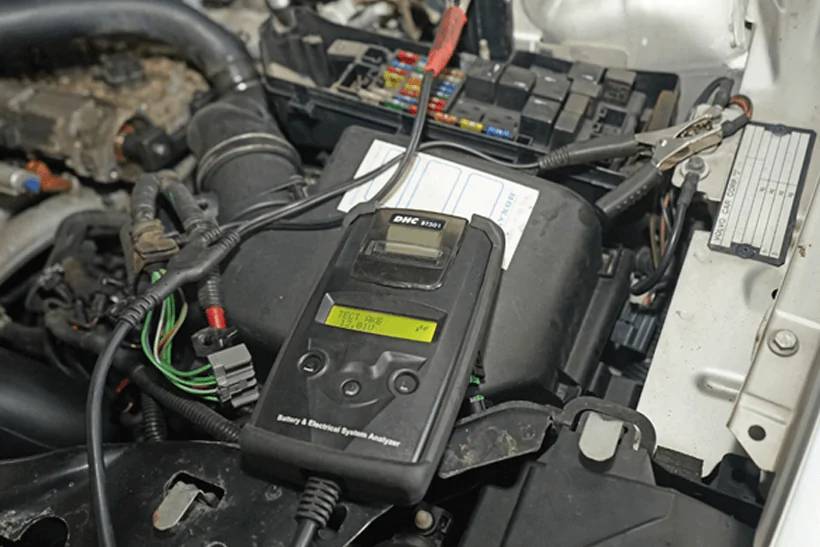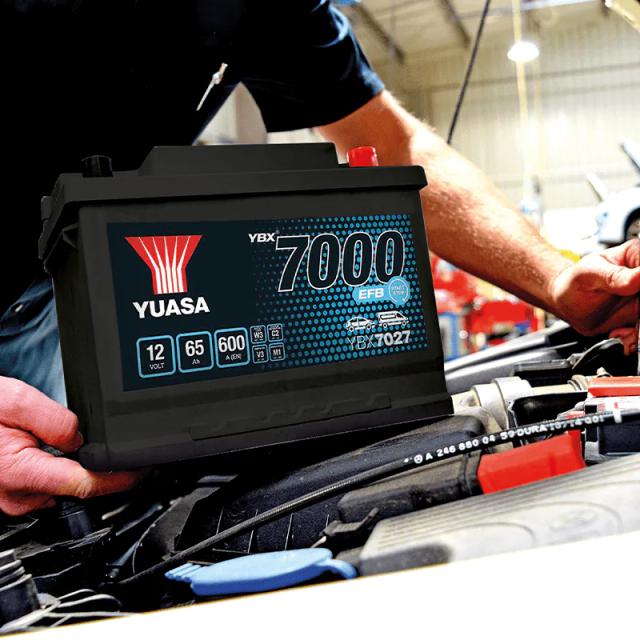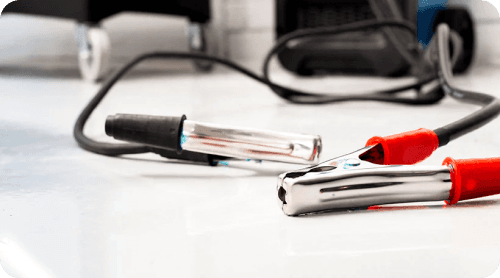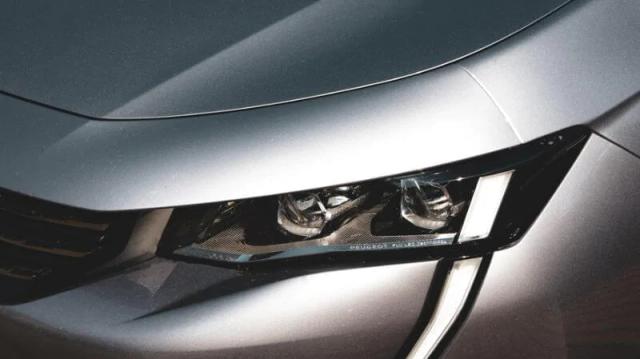
The car alternator is one of the most essential parts of any car's electrical system. It takes more than just petrol to keep your car going. Without electrical energy, our cars wouldn't start, nor would we be able to use the countless handy functions that make our journeys safe and comfortable, like air conditioners, stereos, heated seats, and dashboard lights. It's all thanks to the alternator, a crucial component which generates the electrical charge needed to get your car going and keep all those gadgets and gizmos running as they should.
Car Alternator Basics
If a problem develops with the alternator, it can trigger a chain reaction of electrical faults and issues that could eventually lead to a complete breakdown. So, if you suspect something's wrong, it's crucial to test the alternator and, if needed, fit a replacement as soon as possible.
At GSF we keep a range of replacement alternators and spare alternator parts for most vehicles. You can use our handy product finder – simply enter your registration details on our alternator page, and we'll show you the most appropriate parts for your vehicle.
In this guide, we'll cover:
What Does an Alternator Do?
What Are the Signs of a Bad Alternator?
How To Test a Car Alternator - 5 Simple Steps
How to Change an Alternator
Car Alternator Know-How
What Does an Alternator Do?
So, what is an alternator on a car? The alternator is the heart of your car's electrical system. While many people think that the electricity in a vehicle comes from the car battery, it's actually the alternator that is responsible for generating the electrical energy needed to power your lights, stereo, heating, and other car systems. The battery stores the energy needed to start the engine when you turn the ignition, but it's the car alternator that generates the charge. You can find out more about car batteries in our comprehensive car battery guide here.
The alternator essentially works just like a small generator – in fact, they were called generators until not so long ago. As with any other electrical generator, a car's alternator works using electromagnetism, converting the mechanical energy produced by the moving parts of the engine into electrical power.
When your car is running, the engine turns the crankshaft, which is connected to the alternator pulley by a belt. This turns the magnetic rotor inside the stationary stator assembly, which generates an alternating current (AC). The diode assembly rectifies the alternating current and produces a direct current (DC). This current is used to power the various electrical consumers inside the vehicle – like lights, fans, and heating systems – and to recharge the car battery.
What Are the Signs of a Bad Alternator?
Like any other part in your car, the alternator won't last forever. The internal components that make up the alternator – like the rotor, brushes, and coils – are all susceptible to wear, tear, and corrosion over time. When this happens, the alternator won't be able to generate power as efficiently, which can have knock-on effects in other parts of your vehicle.
Your car's alternator provides power for all of the electrical consumers in your vehicle, from the lights and stereo to the cabin heaters and air conditioner. The first indication that something might be wrong with the alternator will usually be a problem with one or all of these systems. You might also pick up on other bad alternator symptoms, like strange noises or smells.
Here, we've listed the most common signs of a bad alternator:
The Alternator Warning Light Is On
The Headlights Are Dim or Flickering
You Can Hear a Clicking Noise
You Notice Strange Smells
The Electrical Cabin Systems Are Failing
The Car Is Stalling When Running
The Battery Is Flat for No Reason
We explore further into bad alternator symptoms below.
The Alternator Warning Light Is On
Many modern vehicles are fitted with an alternator warning light on the dashboard, usually in the form of the letters "ALT" or "GEN" or a battery-shaped icon. So, if you see this lit, it's likely that something has gone wrong with the alternator, even if you don't notice any of the other symptoms in this list.
The Headlights Are Dim or Flickering
One of the most common signs of a bad alternator is a problem with the headlights. When the alternator is not working correctly, the lights become starved of power, which can cause them to flicker, switch off suddenly, or be much dimmer than usual. You can usually tell it's an issue with the alternator rather than the bulb or wiring because both headlights will be equally affected.
You Can Hear a Clicking Noise
Sometimes, a faulty alternator will cause some bearings to fail inside the engine, producing a strange rattling or clicking noise when the car is running. There can be other explanations for a sound like this, but if you notice this symptom in conjunction with another problem on this list, a dodgy alternator is likely to blame.
You Notice Strange Smells
If the alternator has overheated, you might notice a strange, metallic burning smell under the bonnet. You might also pick up on a burnt rubber smell, which can be caused by the car alternator belt overheating and wearing out.
The Cabin Electrical Systems Are Failing
Almost every electrical consumer in your car relies on the power produced by the alternator, including cabin mechanisms and systems like the power locks and windows, dashboard lights, the air conditioner, and the stereo. Should some or all of these start to cut out, a bad alternator could be the culprit, especially if individual attempts to repair them don't solve the problem.
Your Car Is Stalling When Running
The alternator provides electrical energy to fire the spark plugs, igniting fuel in the engine chamber. If the alternator starts to fail, you may find that the engine stalls repeatedly for seemingly no reason while the car is running.
The Battery Is Flat for No Reason
If your car won't start, you might assume it's because the battery is flat. Batteries can fail for various reasons – they may die in cold weather or when the car is left standing for a long time, for example. But, because the alternator provides the current to recharge the battery, it may actually be this which is causing the problem. So, if your battery dies, it's a good idea to check the car alternator to see if this is the culprit.
How To Test a Car Alternator - 5 Simple Steps
If you've noticed any of the above alternator symptoms, it's a likely sign of a problem with the alternator. But, it's not a guarantee, as they may be caused by other issues and faults with other car parts. Before you begin, you should take the time to make sure that your alternator is definitely causing the problem by testing it using a voltmeter or multimeter.
We've shared how to test an alternator in five simple steps:
Set the multimeter to the correct unit measurements (DCV: direct current voltage) and ensure it points to 20 DCV.
Locate the positive and negative battery terminals. The positive (+) is usually red, while the negative (-) is likely black. If your terminals aren't clearly marked, remember that the positive terminal is always the bigger one.
Attach the multimeter to the battery terminals, connecting the red wire of the multimeter to the positive battery terminal and the black one to the negative battery terminal. The multimeter should show a reading of around 12.6 volts, which means the battery is adequately charged and will give accurate results for the alternator.
Start the engine and recheck the reading. A good alternator will show a reading of between 14.2 volts and 14.7 volts. If it's above this upper limit, your car alternator will likely be overcharging your battery, whereas if it is below the lower limit, the alternator isn't charging the battery enough.
Carry out a load test to test the alternator's ability to charge the car battery and electronic accessories. To do this, you'll need to turn on your headlights, radio and any other components that would usually be running while you drive. The voltage reading should stay within 13 volts.
Please note if your vehicle has a modern computer-controlled charging system. You may need to perform additional tests – please refer to the owner's handbook or contact the manufacturer for more details.
How to Change an Alternator
If you've established that the problem is definitely with the alternator, then the simplest solution is to replace it. Here, we've shared how to change an alternator in 15 steps.
Please note that this job requires an intermediate knowledge of mechanics and car electrical systems. If you need more confidence in carrying out these repairs, please consult a professional mechanic.
Before you get started, you'll need the following parts and tools:
A replacement alternator. This should be the correct specification and brand for your vehicle, as the manufacturer recommends. Contact the maker or dealership directly if you need clarification.
A belt tensioner.
Basic hand tools, including a wrench, screwdriver set, socket set, ratchet, and pry bar.
Replacement serpentine belt.
Cleaning cloths.
Protective gloves
Sticky labels/coloured tape. This isn't necessary but can be helpful if you want to label any wires as you go to make them easier to identify.
A trolley jack. Depending on your car, it may be necessary to raise the vehicle off the ground to enable you to access the alternator properly. So, check this before you start.
The relevant Haynes manual for your car. This is optional, but it's always helpful if you like to double-check things!
Once you've got all this together, you're ready to change the alternator:
Start by saving the memory on your vehicle's pre-set electronics (if applicable). This will keep you from setting them up again once the new alternator is installed.
Open the bonnet and disconnect the negative battery cable. You should always disconnect the battery when working in the engine bay, as this will prevent you from accidentally grounding one of the wires and giving yourself a nasty shock.
Locate the alternator. This varies from vehicle to vehicle – in some cases, it may even be necessary to raise the car up to gain full access to it. Once you have found the alternator, disconnect all the alternator wires from the back of the unit.
Tip: If you're concerned you may forget which alternator wire is which when the time comes to install the new alternator, label them using some sticky labels or coloured tape to help you tell them apart.
Locate and loosen the tensioner pulley. Depending on the make and model of your vehicle, this may be a spring-loaded tensioner, a screw-type tensioner, or a rod-end tensioner – you can find the exact type and location in the handbook. Spring-loaded tensioners can be pulled back using a wrench, while screw-end and rod-type tensioners can be loosened by turning the bolt or rod with a wrench or socket until you can easily remove the belt. Removing the belt from the pulley is the trickiest part of changing an alternator, so take your time. You may need to use quite a lot of force to loosen the tensioner.
Once the tensioner is loose enough, remove the serpentine belt and set aside. If this is proving tricky, ask a friend to hold the tensioner in place while you remove the belt.
Tip: You can use the same serpentine belt if there are no signs of wear or tear and it's still in good condition.
Remove any wiring harnesses, connectors or bolts that hold the alternator in place. The exact type and number of fixings will vary between models, so refer to the handbook if you need help opening these.
Remove the old alternator. It should come away easily if all the connectors or bolts have been removed properly.
Lay out the old alternator next to your replacement and compare them carefully to ensure the new part is right for your car. Both parts should be the same size and shape, and the mounting holes and wire connectors should be located in the same position. If it doesn't look right, return the alternator and source a new one. Don't be tempted to use the new part if you suspect it might not be the right sort, as this could make the problem much worse.
Push the new alternator into position, lining the mounting holes on the part with the mount on the car. Be careful not to let any stray wires get caught – it may help to temporarily secure them using a cable tie if you find them getting in the way.
Slide the mounting bolts into the mounting holes. If your car has an auto-tensioner pulley, you'll want to tighten the bolts at this point. If not, leave the bolts a little loose – they should be just tight enough to hold the alternator secure but still loose enough to wriggle them back and forth a little.
Fit the new serpentine belt (or re-use the old belt if it's still in good condition). You'll need to run the belt over all the relevant pulleys in your car's engine system, including any accessories it's supposed to power in your vehicle. There should be a diagram of the correct way to route this on the car's body inside the engine bay. If you can't see one, check in the owner's handbook or the relevant Haynes manual for your vehicle.
If your car does not have an auto-tensioner type of pulley, you'll need to apply pressure to the alternator using a screwdriver or pry bar until the belt is tightened. To do this, position the bar or screwdriver between the alternator and engine and push it away from the engine. Just be careful not to catch any wires as you do this.
When the belt is at the correct tension, tighten all the mounting bolts. It will make it easier to ask a friend to do this for you while you hold the screwdriver or pry bar. There should be about half an inch of play on the belt when you're done. If it seems too slack, loosen the bolts and adjust the tension.
Reconnect the power cable and fit the wire harness over the alternator. Be sure that this fits snugly – it should fit in precisely the same way as it did with the old alternator.
Reconnect the negative battery cable, taking care to tighten it firmly. Finally, check your work by re-attaching your voltmeter and starting the car: it should now show a reading of around 13.1–16.5 volts. If the battery was dead when you started this process, you may need to jump-start it to get your car going again before you take a reading. You're now all finished changing the alternator!
Car Alternator Know-How
While changing an alternator isn't the most straightforward job, if you have a little automotive know-how, it can save you quite a lot of money compared to taking your car to a garage. You can easily source your new alternator and parts from us by heading to our alternator page.
We also have everything else you need to keep your car's electrical and lighting system in great condition, including parts for the starter system, car bulbs, sensors, fuse boxes, and ignition system parts. So, if more extensive repairs are in order, you should have no difficulty finding exactly what you need.
Shop Alternators at GSF Car Parts Online and In-Store
All our alternators and alternator parts are from trusted brands in the motoring industry, so you can count on them to be reliable and of excellent quality. Plus, our low-price promise means you can always expect great value, too.
We offer free UK delivery on all online orders over £25, plus 60-day returns*. We also know you want to get your car up and running as soon as possible, which is why we offer a Click and Collect service that allows you to get your new alternator in just an hour.
So, buy alternators and other car parts and spares from us with confidence today. Or if you're close to one of our 190 store locations across the UK & Ireland, drop by. Our experienced staff will be able to direct you to the correct part for your vehicle.




